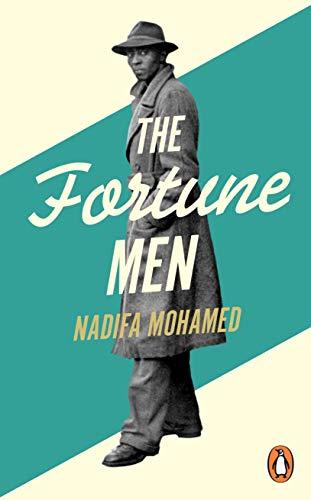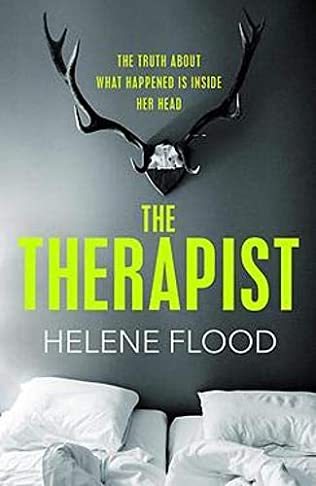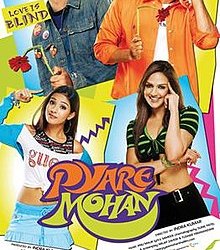#don chowdhury
Explore tagged Tumblr posts
Text
Unmissable International Crime Fiction Novels from April 2021 onwards
1 April
The Untamable by Guillermo Arriaga
MacLehose Press
A gripping coming of age thriller of vengeance and destiny set between Mexico City's murderous 1960s underworld and the bleak tundras of Canada's most remote province. By the BAFTA-winning screenwriter of Amores Perros.
Yukon, Canada's far north. A young man tracks a wolf through the wilderness. In Mexico City, Juan Guillermo has pledged vengeance.

1 April
Bullet Train by Kotaro Isaka, translated by Sam Marissa
Harvill Secker
Five killers find themselves on a bullet train from Tokyo competing for a suitcase full of money. Who will make it to the last station? A bestseller in Japan, Bullet Train is an original and propulsive thriller which fizzes with an incredible energy as its complex net of double-crosses and twists unwinds to the last station.
15 April
Silenced by Sólveig Pálsdóttir, translated by Quentin Bates
Corylus Books
After a turbulent few years, Guðgeir Fransson is back with the Reykjavík police force and is called on to look into the suspicious suicide of a young woman in a cell at the Hólmsheiði prison. On the surface, it looks like a straightforward investigation. As he digs into the dead woman’s past, he unearths links to a man’s disappearance more than twenty years ago.
My review of The Fox:
15 April
We Trade Our Night for Someone Else’s Day by Ivana Bodrožić, translated by Ellen Elias-Bursac
Penguin Random House
Nora is a journalist assigned to do a puff piece on the perpetrator of a crime of passion–a Croatian high school teacher who fell in love with one of her students, a Serb, and is now in prison for having murdered her husband. But Nora herself is the daughter of a man who was murdered years earlier under mysterious circumstances. And she wants, if not to avenge her father, at least to bring to justice whoever committed the crime.
15 April
How To Betray Your Country by James Wolff
Bitter Lemon Press
Following on from the acclaimed debut novel Beside the Syrian Sea, this is the second title in a planned trilogy about loyalty and betrayal in the modern world. An authentic thriller about the thin line between following your conscience and following orders. James Wolff is the pseudonym of a young English novelist who “has been working for the British government for the last ten years”.
22 April
Trap for Cinderella by Sebastien Japrisot
Gallic Books
A beach house at a French resort is gutted by fire. Trapped inside are two women - one rich and the other poor. Only one of them survives, burnt beyond recognition and in a state of total amnesia. Who is she, the heiress or her penniless friend? A killer, or an intended victim?
29 April
Geiger by Gustaf Skordeman
Zaffre
The landline rings as Agneta is waving off her grandchildren. Just one word comes out of the receiver: 'Geiger'. For decades, Agneta has always known that this moment would come, but she is shaken. She knows what it means. Retrieving her weapon from its hiding place, she attaches the silencer and creeps up behind her husband before pressing the barrel to his temple.

29 April
Facets of Death by Michael Stanley
Orenda Books
Detective Kubu, renowned international detective, has faced off with death more times than he can count... But what was the case that established him as a force to be reckoned with? In Facets of Death, a prequel to the acclaimed Detective Kubu series, the fresh-faced cop gets ensnared in an international web of danger—can he get out before disaster strikes?
29 April
The Girl Who Died by Ragnar Jonasson
Michael Joseph
Una knows she is struggling to deal with her father's sudden, tragic suicide. She spends her nights drinking alone in Reykjavik, stricken with thoughts that she might one day follow in his footsteps.
So when she sees an advert seeking a teacher for two girls in the tiny village of Skálar - population of ten - on the storm-battered north coast of the island, she sees it as a chance to escape.
13 May
Seat 7a by Sebastian Fitzek, translated by Jamie Bulloch
Head of Zeus
Psychiatrist Mats Krüger knows that his irrational fear of flying is just that – irrational. He knows that flying is nineteen times safer than driving. He also knows that if something does happen on a plane, the worst place to be is seat 7A. That's why on his first plane journey in 20 years – to be with his only daughter as she gives birth – he's booked seat 7A, so no one else can sit there. If no one is sat there, surely nothing will go wrong.
My review of Passenger 23 :
https://fictionfromafar.tumblr.com/post/643950323513311232/passenger-23-by-sebastian-fitzek-passenger-23-by
13 May
The Assistant by Kjell Ola Dahl, translated by Don Bartlett
Orenda Books
Oslo, 1938. When a woman turns up at the office of police-turned-private investigator Ludvig Paaske, has accepted a routine case to find evidence of a cheating husband but soon enough his assistant Jack Rivers has been accused of murder. Rivers is no angel, and Paaske must dig deep to find out what’s going on. The secrets he uncovers go all the way back to 1920s Norway when smugglers, pimps and racketeers ruled the Oslo underworld.
20 May
Summertime, All the Cats Are Bored by Philippe Georget, Translated by Steven Rendall
Europa Editions
It’s the middle of a long hot summer on the French Mediterranean shore and the town is full of tourists. Sebag and Molina, two tired cops who are being slowly devoured by dull routine and family worries, deal with the day’s misdemeanors and petty complaints at the Perpignan police headquarters without a trace of enthusiasm. Out of the blue a young Dutch woman is brutally murdered on a beach at Argelès, and another disappears without a trace in the alleys of the city. A serial killer obsessed with Dutch women?

20 May
Oxygen by Sacha Naspini, Translated by Clarissa Botsford
Europa Editions
Laura disappeared into thin air in 1999, at eight years old. She was found in a metal container, fourteen years later.
Luca is having dinner with his father dinner when they are interrupted by a visit from the carabinieri, who take his father away. Luca can only watch the scene unfold, helpless. The charges brought against esteemed anthropologist Carlo Maria Balestri are extremely grave: multiple counts of abduction, torture, murder, and concealing his victims’ bodies.
27 May
The Waiter by Ajay Chowdhury
Harvill Secker
Disgraced detective Kamil Rahman moves from Kolkata to London to start afresh as a waiter in an Indian restaurant. But the day he caters a birthday party for his boss's friend on Millionaire's Row, his simple new life becomes rather complicated. The event is a success, the food is delicious, but later that evening the host, Rakesh, is found dead in his swimming pool.
27 May
The Fortune Men by Nadifa Mohamed
Viking
Mahmood Mattan is a fixture in Cardiff's Tiger Bay, 1952, which bustles with Somali and West Indian sailors, Maltese businessmen and Jewish families. He is a father, chancer, some-time petty thief. He is many things, in fact, but he is not a murderer.
So when a shopkeeper is brutally killed and all eyes fall on him, Mahmood isn't too worried. It is true that he has been getting into trouble more often since his Welsh wife Laura left him. But Mahmood is secure in his innocence in a country where, he thinks, justice is served.

10 June
In the Shadow of the Fire by Herve Le Corre, translated by Tina Kover
Europa Editions
The Paris Commune’s “bloody week” sees the climax of the savagery of the clashes between the Communards and the French Armed Forces loyal to Versailles. Amid the shrapnel and the chaos, while the entire west side of Paris is a field of ruins, a photographer fascinated by the suffering of young women takes “suggestive” photos to sell to a particular clientele. Young women begin disappearing, and when Caroline, a seamstress who volunteers at a first aid station, is counted among the missing, her fiancé Nicolas, a member of the Commune’s National Guard, and Communal security officer Antoine, sets off independently in search of her.
10 June
The All Human Wisdom by Pierre Lemaitre
MacLehose Press
In 1927, the great and the good of Paris gather at the funeral of the wealthy banker, Marcel Péricourt. His daughter, Madeleine, is poised to take over his financial empire (although, unfortunately, she knows next to nothing about banking). More unfortunately still, when Madeleine's seven-year-old son, Paul, tumbles from a second floor window of the Péricourt mansion on the day of his grandfather's funeral, and suffers life-changing injuries, his fall sets off a chain of events that will reduce Madeleine to destitution and ruin in a matter of months.
15 June
The Transparency Of Time, Leonardo Padura, translated by Anna Kushner,
Bitter Lemon Press
Mario Conde is facing down his sixtieth birthday. What does he have to show for his decades on the planet? A failing body, a slower mind, and a decrepit country, in which both the ideals and failures of the Cuban Revolution are being swept away in favor of a new and newly cosmopolitan worship of money. Rescue comes in the form of a new case: an old Marxist turned flamboyant practitioner of Santería appears on the scene to engage Conde to track down a stolen statue of the Virgen de Regla—a black Madonna. This sets Conde on a quest that spans twenty-first century Havana as well as the distant past to uncover the true provenance of the statue.

My review of Havana Fever:
https://fictionfromafar.tumblr.com/post/631759758177746944/havana-fever-written-by-leonardo-padura
24 June
The Wrong Goodbye by Toshihiko Yahagi, translated by Alfred Birnbaum
MacLehose Press
In a nod to Raymond Chandler, The Wrong Goodbye pits homicide detective Eiji Futamura against a shady Chinese business empire and U.S. military intelligence in the docklands of recession hit Japan. After the frozen corpse of immigrant barman Tran Binh Long washes up in midsummer near Yokosuka U.S. Navy Base, Futamura meets a strange customer from Tran’s bar. Vietnam vet pilot Billy Lou Bonney talks Futamura into hauling three suitcases of “goods” to Yokota US Air Base late at night and flies off leaving a dead woman behind. My review:
https://fictionfromafar.tumblr.com/post/641412317374988288/the-wrong-goodbye
24 June
Sleepless by Romy Haussmann, translated by Jamie Bulloch
Quercus
It's been years since Nadja Kulka was convicted of a cruel crime. After being released from prison, she's wanted nothing more than to live a normal life: nice flat, steady job, even a few friends. But when one of those friends, Laura von Hoven - free-spirited beauty and wife of Nadja's boss - kills her lover and begs Nadja for her help, Nadja can't seem to be able to refuse.
29 June
Black Ice by Carin Gerhardsen
Scarlet
January in Gotland. The days are short, the air is cold, and all the roads are covered in snow. On a deserted, icy backroad, these wintery conditions will soon bring together a group of strangers with a force devastating enough to change their lives forever when, in the midst of a brief period, a deadly accident and two separate crimes leave victims in their wake.
1st July
The Darkness Knows by Arnaldur Indridason
Harvill Secker
A woman approaches Konrad with new information and progress can finally be made. But as Konrad starts to look back at the case and secrets of the past, he is forced to come face to face with his own dark side. In What the Darkness Knows, the master of Icelandic crime writing reunites readers with Konrad, the unforgettable retired detective from The Shadow District.
1 July
Resilience by Bogdan Hrib, translated by Marina Sofia
Corylus Books
Stelian Munteanu has had enough of being an international man of mystery: all he wants to do is make the long-distance relationship with his wife Sofia work. But when the notorious Romanian businessman Pavel Coman asks him to investigate the death of his daughter in the north of England, he reluctantly gets involved once more in what proves to be a tangled web of shady business dealings and political conspiracies. Moving rapidly between London, Newcastle, Bucharest and Iasi, this novel shows just how easy it is to fall prey to fake news and social media manipulation.
8 July
The Therapist by Helene Flood, translated by Alison McCulloch
MacLehose Press
A voicemail from her husband tells Sara he's arrived at the holiday cabin. Then a call from his friend confirms he never did. She tries to carry on as normal, teasing out her clients' deepest fears, but as the hours stretch out, her own begin to surface. And when the police finally take an interest, they want to know why Sara deleted that voicemail.

13 July
Elena Knows by Claudia Piñeiro translated by Frances Riddle
Charco Press
After Rita is found dead in a church she used to attend, the official investigation into the incident is quickly closed. Her sickly mother is the only person still determined to find the culprit. Chronicling a difficult journey across the suburbs of the city, an old debt and a revealing conversation, Elena Knows unravels the secrets of its characters and the hidden facets of authoritarianism and hypocrisy in our society.
My review of Betty Boo:
https://fictionfromafar.tumblr.com/post/633225446612484096/
15 July
The Basel Killings
Hansjörg Schneider
Bitter Lemon Press
It the end of October, the city of Basel is grey and wet. It could be December. It is just after midnight when Police Inspector Peter Hunkeler, on his way home and slightly worse for wear, spots old man Hardy sitting on a bench under a street light. He wants to smoke a cigarette with him, but the usually very loquacious Hardy is silent—his throat a gaping wound. Turns out he was first strangled, then his left earlobe slit, his diamond stud stolen. The media and the police come quickly to the same conclusion: Hardy’s murder was the work of a gang of Albanian drug smugglers. But for Hunkeler that seems too obvious.
20 July
The Double Mother by Michel Bussi, translated by Sam Taylor
W&N
Already shown as a serial on Channel4’s Walter Presents (as The Other Mother), four-year-old Malone Moulin is haunted by nightmares of being handed over to a complete stranger and begins claiming his mother is not his real mother. His teachers at school say that it is all in his imagination as his mother has a birth certificate, photos of him as a child and even the pediatrician confirms Malone is her son. The school psychologist, Vasily, believes otherwise as the child vividly describes an exchange between two women.

22 July
Girls Who Lie Eva Bjorg AEgisdottir
Orenda
When single mother Maríanna disappears from her home, leaving an apologetic note on the kitchen table, everyone assumes that she’s taken her own life … until her body is found on the Grábrók lava fields seven months later, clearly the victim of murder. Her neglected fifteen-year-old daughter Hekla has been placed in foster care, but is her perfect new life hiding something sinister?

My Review of A Creak On The Stairs:
https://fictionfromafar.tumblr.com/post/631717704661942273/
22nd July
The Doll Yrsa Sigurdardottir
Hodder & Stoughton
It was meant to be a quiet family fishing trip, a chance for mother and daughter to talk. But it changes the course of their lives forever. They catch nothing except a broken doll that gets tangled in the net. After years in the ocean, the doll a terrifying sight and the mother's first instinct is to throw it back, but she relents when her daughter pleads to keep it. This simple act of kindness proves fatal. That evening, the mother posts a picture of the doll on social media. By the morning, she is dead and the doll has disappeared.
5 August
The Soul Breaker by Sebastian Fitzek, translated by Jamie Bulloch
Head Of Zeus
He doesn't kill them, or mutilate them. But he leaves them completely dead inside, paralysed and catatonic. His only trace a note left in their hands. There are three known victims when suddenly the abductions stop. The Soul Breaker has tired of his game, it seems. Meanwhile, a man has been found in the snow outside an exclusive psychiatric clinic. He has no recollection of who he is, or why he is there. Unable to match him to any of the police's missing people, the nurses call him Casper.
12 August
Cold Sun by Anita Sivakumaran
Dialogue Books
Bangalore. Three high-profile women murdered, their bodies draped in identical red saris. When the killer targets the British Foreign Minister's ex-wife, Scotland Yard sends the troubled, brilliant DI Vijay Patel to lend his expertise to the Indian police investigation. Stranger in a strange land, ex-professional cricketer Patel must battle local resentment and his own ignorance of his ancestral country, while trying to save his failing relationship back home.

August date TBC
Skin Deep by Antonia Lassa, translated by Jacky Collins
Corylus Books
The corpse of an elderly millionaire is discovered brutally scarred with acid burns. Her young lover is the chief suspect but the authorities admit they are baffled. It will take the intervention of private detective Albert Larten to explore all the complexities of desire, and ultimately reveal the truth.
19 August
Come Hell Or High Water by Christian Unge
MacLehose Press
The first in a new Swedish crime series featuring Tekla Berg – a fearless doctor with a remarkable photographic memory
With 85% per cent burns to his body and a 115% risk of dying, it’s a miracle the patient is still alive. That he made it this far is thanks to Tekla Berg, an emergency physician whose unorthodox methods and photographic memory are often the difference between life and death.
30 September
Night Hunters by Oliver Bottini
MacLehose Press
The fourth in the Black Forest Investigations - by the four-time winner of the German Crime Fiction Award. Over the course of several days one hot summer, a female student from Freiburg disappears, a father is murdered in a brutal attack, a teenage boy drowns in the Rhine in suspicious circumstances. It soon becomes evident to Chief Inspector Louise Boni and her colleagues at Freiburg's criminal police that the three cases are connected - and that others are now in terrible danger. Including Boni herself.
07 October
Lemon by Kwon Yeo-Sun
House Of Zeus
Focusing on the unsolved murder of teenage girl, this literary crime novel offers insights into gender, class and privilege in Seoul, and marks the English-language debut for award-winning Korean author, Kwon Yeo-sun.
In the summer of 2002, my big sister Hae-on was murdered. She was beautiful, intelligent, and only nineteen years old. Two boys were questioned, but the case was never solved. Her killer still walks free.

12 October
Bread: The Bastards of Pizzofalcone
by Maurizio de Giovanni
Europa Editions
Sometimes it takes facing a formidable adversary to truly know one’s worth. The Bastards of Pizzofalcone may have found just that: when the brutal murder of a baker rattles the city, they are ready to investigate. There’s nothing they wouldn’t do to prove themselves to their community. But this time the police are divided: for the special anti-mob branch, the local mafia is doubtlessly responsible for the crime, but the Bastards are not so sure and think there may be another reason for the murder of the renowned artisan, whose traditionally baked bread attracted customers from far and wide. A rivalry between the policeman and the magistrate is formed, one that, in the end, will extend to more than just their work lives.
12 October
The Corpse Flower by Anne Mette Hancock
Crooked Lane Books
It's early September in Copenhagen, the rain has been coming down for weeks, and 36-year-old journalist Heloise Kaldan is in the middle of a nightmare. One of her sources has been caught lying, and she could lose her job over it. And then she receives the first in a series of cryptic and ominous letters from an alleged killer.
28 October
Inertia by Camilla Grebe
Zaffre
Inertia is an eerie psychological thriller from the award-winning Swedish bestselling author Camilla Grebe. When 18-year old Samuel finds himself at the centre of a drug deal gone wrong, he is forced to go underground to escape the police and an infamous drug lord.
October date TBC
The Commandments by Oskar Gudmundsson
Corylus Books
On a cold winter morning in 1995, Anton, a 19-year-old boy, met a priest outside Glerárkirkja in Akureyri. After that, he was never seen again. Two decades later a priest is found murdered in the church in Grenivík. When the police investigate the case, they finds that a deacon has also been executed inside Akureyri.
28 October
Cold as Hell by Lilja Sigurdardottir
Orenda Books
Icelandic sisters Áróra and Ísafold live in different countries and aren‘t on speaking terms, but when their mother loses contact with Ísafold, Áróra reluctantly returns to Iceland to find her sister. But she soon realizes that her sister isn’t avoiding her … she has disappeared, without trace.
As she confonts Ísafold’s abusive, drug-dealing boyfriend Björn, and begins to probe her sister’s reclusive neighbours – who have their own reasons for staying out of sight – leads Áróra into an ever darker web of intrigue and manipulation.
28 October
The Rabbit Factor by Antti Toumainen
Orenda Books
What makes life perfect? Insurance mathematician Henri Koskinen knows the answer because he calculates everything down to the very last decimal.
And then, for the first time, Henri is faced with the incalculable. After suddenly losing his job, Henri inherits an adventure park from his brother – its peculiar employees and troubling financial problems included. The worst of the financial issues appear to originate from big loans taken from criminal quarters … and some dangerous men are very keen to get their money back.
2 November
Bricklayers
Selva Almada
Charco Press
Oscar Tamai and Elvio Miranda, the patriarchs of two families of brickmakers, have for years nursed a mutual hatred, but their teenage sons, Pájaro and Ángelito, somehow fell in love. Brickmakers begins as Pájaro and Marciano, Ángelito’s older brother, lie dying in the mud at the base of a Ferris wheel. Inhabiting a dreamlike state between life and death, they recall the events that forced them to pay the price of their fathers’ petty feud.
My review of Dead Girls:
https://fictionfromafar.tumblr.com/post/642554449326489600/dead-girls-charco-press
4 November
The Night Will Be Long
Santiago Gamboa
Europa Editions
When a horribly violent confrontation occurs outside of Cauca, Colombia, only a young boy is around to witness it. But no sooner does the violence happen than it disappears, vanished without a trace. Nobody claims to have seen anything. Nobody claims to have heard anything. That is, until an anonymous accusation catalyzes a dangerous investigation into the deep underbelly of the Christian churches present today in Latin America. The Night Will Be Long is a dark, twisting thriller filled with moments of humor and pain--a story that will stick with readers long after they turn the last page.
11 November
The Shadows of Men by Abir Mukherjee
Harvill Secker
When a Hindu theologian is found murdered in his home, the city is on the brink of all-out religious war. Can officers of the Imperial Police Force, Captain Sam Wyndham and Sergeant Surendranath Banerjee track down those responsible in time to stop a bloodbath? Set at a time of heightened political tension, beginning in atmospheric Calcutta and taking the detectives all the way to bustling Bombay, the latest instalment in this 'unmissable' (The Times) series presents Wyndham and Banerjee with an unprecedented challenge.
#crimeintranslation#crime fiction#european literature#latinamericancrimefiction#Nordic noir#Japanese crime fiction
2 notes
·
View notes
Quote
Accept me who I am, don't accept the fact who you want me to become.
Jayeeta Chowdhury
1 note
·
View note
Text
Don Chowdhury- Award Winning Creative Director, Art Director, Packaging Designer
I’m an award-winning Senior Creative Director who is both creative and budget conscious. I am looking for a long-term commitment with your company. I think my education & 24 years of working experiences fit nicely with the entire job requirements, and I’m sure that I could make a significant contribution to your company. Also I feel that my education and working experience will allow me to bring the benefits of my background to your organization. And my relatively extensive experience gives me confidence in my career direction and in my abilities to perform competently.
I’m known for saving companies a lot of money through planning, budgeting & management, from a project’s inception to its completion. My goals are to produce innovative, artistic, and excellent products, to maximize productivity and efficiency, and remain dedicated to excellence and high standards. I have excellent knowledge in Pharmaceutical & health care related all kind of media such as brand development, franchise to web, broadcast, print media including sales marketing catalogue, brochure, tri-fold, vitamins, food supplement, minoxidil, packaging, branding, including graph, chart & illustration, layout design, creative marketing, sales kit, advertising, photo direction, photo shoot, visual merchandising & other related design. I worked for similar companies such as yours are listed below: PVD & Partners Inc., Grey Healthcare Group: New York City, Montage Media, Torre Lazur, McCann: NJ & Recently, Atlantic Coast Media Group, (Cosmetics, Skincare, Hair Care products (Hydroxatone®, Hydrolyze® liminique, Celtrixa, bellaplex, Venacura, Lashatone, Miracle Skin (Sarah McNamara), Keranique® (Hair Care Solution), Christie Brinkley. (Our Partners: Nordstrom, Sephora, Ulta, Kohl’s, Boots, Costco wholesale, Sam’s Club, Dermstore. • Offer multi-media services from Packaging design (Sales increases tremendously by my new Award-Winning Branding design) Product, P.O.P, Display, Print, Online, TV Ad design and overall direction form model/fashion photo shoot to asset management, Web, broadcast (Television HSN, QVC), sourcing and many other related area. Web Address: atlanticcoastmedia.com/ hydroxatone.com/, www.miracleskintransformer.com/, christiebrinkleyauthenticskincare.com/ I have professional 24 years of experience from design, marketing, concept development to finish production including Print Packaging, web marketing, brand marketing... (Presently my design packaging is the highest selling product in the following Retail stores: CVS, Costco, Sam’s Club, Ulta & many brand stores), P.O.P, direct mail marketing, branding, Trade-Shows, writing a branding guideline, writing creative copy, people management, hands on project (Managed 12 to 15 Graphic Designers), web, e-commerce, multimedia (HSN, QVC) and so on. I also have a large network of media resources (Locally & internationally such as Canada, China, Hong Kong, Vietnam, Bangladesh) and know exactly where to go for the best quality at the most reasonable prices.
I have an excellent 12 years of Digital Media experience in UI experiences in across all multiple media. Banner, Web interface, email blast, Web direction, Web Branding, e-commerce, shopping cart, Print vs. Web, e-catalogue, S.E.O, Seo Analysis & Compliance Reports, Social Media, Social media Management, (Facebook, LinkedIn, twitter, Pinterest, You tube & Google plus, Google AD Words, Google Business, Google Plus Marketing Strategies) Social Media Strategy, Pay per Click management, Blog, organic search, Smart devices application development, manage web team, web branding Guideline, HTML, Home Page Creation & Site Development, Web Site design Methodology & Technology, Internet Business Foundations sourcing and many more.
#Creative Director Sr. Art Director Package Design Manager Brand Design Manager#don chowdhury#dondesignstudio.com#healthcare design#photography
0 notes
Link
0 notes
Text
Quirky comedy 'Chuddy Buddy' marks superstar Jeet & filmmaker Abhishek Ray's entry into hindi short film genre

When Bengali cinema superstar Jeet decided to venture into the Hindi short film genre, he chose Music director Abhishek Ray to don the mantle of the director as well as screenplay/dialogue writer, Editor and, of course, Music Director. Together, they have released their first Hindi short film under Jeet's production house, Grassroot Entertainment, and its name is "Chuddy Buddy." The movie, released on YouTube, has already garnered thousands of views and is fast becoming popular among the viewers.
( link: https://youtu.be/7TYNzjHzwuI )
Abhishek Ray is already a well-known name in film circle since he has composed music for such award-winning movies like Paan Singh Tomar, I am Kalam, Saheb Biwi Aur Gangster, and Welcome Back. Now he has joined hands with Jeet, the Bengali superstar known for his films like Boss, Sathi, Josh, Asur, Abhiman, Baazi, etc. Famous Bollywood film critic Komal Nahata has tweeted about Chuddy Buddy calling it 'A quirky comedy with a twist. '
The first Hindi film to be produced by Grassroot Entertainment, the project is spearheaded by actors Gourab Roy Chowdhury, Sayan Ghosh & supported by Abhijit Bhattacharjee, Rohini Sen, Sreya Hazra and Sreejee Mukherjee.
Talking about his directorial project and his association with Jeet, Abhishek says, "I was overjoyed when Jeet Bhai trusted my directorial skills on his brilliant story idea. While writing the screenplay and dialogues, I got inspired by my Bollywood journey where I have often witnessed many human complexes and jelousy. Smaller artistes feel that they have all the qualities to be at the top rather than the ruling superstars. This widespread complex is essentially the premise of my film." In fact, Abhishek goes on to say that with Chuddy Buddy, he has tried to be "careful about presenting this tricky psychological subject to the audience in a light hearted funny manner."
Abhishek, who began his musical journey with none other than ace poet & lyricist Gulzar, has also directed music videos of songs sung by iconic singers such as Shreya Ghoshal, Kavita Krishnamurthy and Shaan.. In fact, Abhishek brought the year 2021 to a close with a soulful ghazal penned by Gulzar, titled "Ranjo Gham." ( link: https://youtu.be/bR5DWIgI-Q0 ) He has been the recipient of the National Mirchi Music Awards for best non- film song featuring Sonu Nigam & Shreya Ghoshal. Apart from Bollywood, he is also known for being the Founder of Sitabani Wildlife Reserve, which is India's first private reserve with the presence of wild tigers. His wildlife conservation activities have also been recognized under the government's Swabhiman Bharat campaign.
0 notes
Text
Crimebustersthe Creative Archive

Meera Borwankar JCP, Mumbai and head of crime branch
Crime Busters Wiki



Earn 125 points on every ticket you buy. Rack up 500 points and you'll score a $5 reward for more movies.
The Kickstarter campaign for the first issue of The Crimebusters is complete, and was a rousing success. Thanks so much to everyone who supported it! Im really looking forward to sending out the comic and hearing what you all think. And Im hard at work already on issue #2, so Ill certainly be sha.
She made history on July 21, 2004, when she took charge of Mumbai?s famed crime branch to become the first woman ever to head the department, which has to contend with, among other things, one of the world?s most organised mafias. The 46-year-old mother of two teenage sons pipped Arup Patnaik, special IG of the Special Reserve Force, and K.L. Prasad, an IG at the state police headquarters, to the post. Borwankar is known as one of the toughest officers Maharashtra has had ? her bosses, subordinates and the criminals she has tackled will heartily vouch for that. During her stint with the state Crime Investigation Department from 1993-95, one of the important cases she investigated was the infamous Jalgaon sex scandal in which local politicians were accused of duping young girls with false promises of jobs and loans. For her work, Borwankar has received the President?s Medal for meritorious service in 1997, apart from the Police Medal and the Director General?s Insignia. Educational high point? She has studied policy analysis in law enforcement at the University of Minnesota in the US.
G. Aswati ASP, Gadchiroli
When asked about how a woman police officer can make a difference in the lives of ordinary women, Aswati replies, ?A woman is seated in front of me right now. She is telling me about things in her life that she can never tell a male police officer?. Aswati (seen here with her husband C. Dorje) emphasises that women will certainly make a difference as far as crimes against women go. She may be the daughter of acclaimed Malayalam filmmaker Adoor Gopalakrishnan, but her aspirations have little to do with art. Known as an officer of integrity, she belongs to the 2000-batch of Assam cadre and was posted in Assam before being transferred to Maharashtra as assistant superintendent of police of the Naxal-infested Gadchiroli region.
Made in Maharashtra: Maharashtra has in fact a high number of women police officers compared to other states. Apart from Borwankar and Aswati, the state police has Sridevi Goyal, special IG, railways; Rashmi Shukla, deputy IG, prisons; Archana Tyagi, superintendent of police, Ratnagiri district; Maria Fernandes who is posted as deputy commissioner of police, headquarter-II, Mumbai police; Supriya Patil-Yadav, DCP, state intelligence department in the state police headquarter in Mumbai, deputy inspector general of police (prisons), superintendent of Arthur Road jail, Swati Sathe; and deputy commissioner (traffic) Pradnya Saravade. Saravade works as the deputy commissioner of the social service branch which falls under the direct supervision of Borwankar. As DCP in-charge of the port zone, she had unearthed a racket of exotic foreign-made cars being imported into India through corrupt port officials.
Blog Archive 2020 (152) July (25) June (30) May (31) April (30). Picturescape biology. This work is licensed under a Creative Commons Attribution-No Derivative Works 3.0 License.
Damayanti Sen DCP, DD, Calcutta
On the phone Damayanti Sen, deputy commissioner of police (special), detective department, Calcutta, sounds as no-nonsense a person as she later transpires to be. She doesn?t mind interviews, she says, provided the talk revolves around her ? no personal questions, please! When you see Damayanti Sen (left), sitting in her large Lal Bazaar detective department room, she looks incredibly young, a tiny figure in her large straight-backed leather chair. But she exudes self-confidence. Because she doesn?t think that one?s gender makes any difference to the job at hand. Not in her profession and not in any other. ?No, I don?t think that women are better or worse off in a job. The only reason people ask a lot of questions related to my gender, is because there are fewer women in my profession now than men. But as that changes, people will stop being so interested.? Sen did her bachelors and masters in economics from Jadavpur University, both with a first class first. She took her IPS exams in 1996 and says she just happened to drift into the profession. She is married and her husband is in teaching.
Kanchan Chowdhury DGP, Uttaranchal
The country got its first woman director-general of police with Kanchan Chowdhury taking over as the head of the force in Uttaranchal since last year. Chowdhury wants to do ?something concrete for the women of Uttaranchal? and is planning to set up counselling centres in every district, not only in Uttaranchal but in the entire country. ?These centres could provide shelter, counselling, rehabilitation and other needs of oppressed and depressed women,? she elaborates. When asked how she felt that about being the new DGP of Uttaranchal and commanding a force of so many men, she says, ?Nothing special. But being the head of the police force, I shall see that my command is obeyed in letter and spirit.?
Chowdhury is, interestingly, the inspiration behind the Eighties? TV serial on a woman cop, Udaan.
Kanwaljeet Deol JCP, Delhi
As joint commissioner of police, Delhi headquarters, she has reduced several hardened criminals to their quaking knees, and as an official who brooks no oversight from her teams, is regarded with considerable awe by her colleagues too. Currently holding two posts, she is also the acting special commissioner of police, administration. She swears by T.S. Eliot and Marquez, but when it comes to her own literary skills, prefers to write something like 101 Tips To Survive The City (Penguin, 2002). Deol belongs to the Union Territory cadre, and joined the IPS after an MSc in physics from Punjab University in 1977, chiefly to be with her husband, Shamsher Deol, who had qualified for the IPS the year before. She says she owes her knowledge of the nitty-gritties of the police system to her first posting in 1978, in Panjim, where she had three police stations under her. She thinks policing is like mothering. ?Policing has been regarded a man?s profession for a long time. It?s a fallacy. I think policewomen give a more palatable image to the public. Team. They provide a soft side to a hard profession,? says Deol, who is on a mission to create a more effective police force in the 10 years of service that she has left.
Vimla Mehra JCP, Crime Against Women Cell, Delhi
Crime Busters Wiki
As joint commissioner of police, crime against women (CAW) cell, Delhi, she is taking joint commissioner Kanwaljeet Deol?s work forward (it was Deol who was at the forefront of the cell in 1986). Mehra, who has been heading the cell since 2002, and has brought in some very effective changes in its functioning, started with a posting in the Andaman and Nicobar Islands after her induction into the IPS in 1978, but has held an array of posts which required a fair amount of courage on her part. She was posted as additional DCP, south, after the infamous 1984 riots in Delhi, and has worked in the Central Reserve Police Force for four-and-a-half years, which included two years in the Rapid Action Force (RAF). The CAW cell deals mainly with matrimonial crimes, including domestic abuse, dowry deaths and other related crimes. Mehra may also be credited with starting the 1091 Helpline, a 24-hour distress call centre for women, a mobile helpline which immediately starts for the destination called from and a post box service, where women can write to P. Box 5353 for help. Now a strong 170-member force, the women?s crime police also imparts training in self-defence. ?I am all for improving our gender sensitivity in 2005,? says Mehra.

0 notes
Text
Kutumb Marathi Movie 2006

Kutumb, a musical Gujarati film to be released this Jan. Lucknowites are so loving: Hiten Tejwani Hiten Tejwani to shoot in Sector 18 and 67 for upcoming. Swapna Joshi debuts as director in Marathi films.
Kutumb The Family is a Hindi movie released on 26 May, 2017. The movie is directed by Amit Shree Yadav and featured Rajpal Yadav and Alok Nath as lead characters.
Kutumb Marathi Movie 2006 Movie
Kutumb Marathi Movie 2006 Full
Kutumb Marathi Movie 2006 Watch
MarathiBoli is website for all Articles in Marathi language, Information related Marathi Movies, Marathi Music, Marathi Books, Marathi Culture, Marathi Kavita/Poem Marathi Movie Kutumb By Mahesh Manjarekar, cast Jitendra joshi and others. Ramp walk music hindi. House line in palmistry.
Manjrekar at Education Awareness Event
Born16 August 1958 (age 62)(1) Occupation
Film actor
director
screenwriter
producer
Years active1975–presentSpouse(s)Medha ManjrekarChildren3
Mahesh Vaman Manjrekar (born 16 August 1958)(1) is an Indian film director, actor, writer and producer.(2)(3) He is credited with directing the critically acclaimed films Vaastav: The Reality (1999), Astitva (2000) and Viruddh.. Family Comes First (2005). He has won a National Film Award and two Star Screen Awards. Besides direction, he has acted in several films, including some of his own productions. He was first seen in Door darshan Marathi series named Kshitij in which he played a leprosy patient. He first gained acclaim as an actor for his performance in the 2002 film Kaante, and later played negative roles in the Tamil film Arrambam (2013), Telugu film Okkadunnadu (2007) and as the gangster Javed in the film Slumdog Millionaire (2008). He played Shivaji in Marathi film Me Shivajiraje Bhosale Boltoy. He also played the negative role of Harpeez Dongara in the Aakhri Chunauti series of episodes in C.I.D.. Manjrekar was acclaimed for the negative role as inspector D.R. Talpade in the movie Wanted.
He was a MNS candidate from Mumbai North West in 2014 Lok Sabha Elections but lost to Gajanan Kirtikar of Shiv Sena.(4)(5)
Filmography(edit)
Actor(edit)
YearFilmsRoleLanguage1999Vaastav: The RealityAs himself in SongHindi2001Ehsaas: The FeelingMichaelHindi2002KaanteRaja 'Balli' YadavHindi2003Pran Jaye Par Shaan Na JayeMunna Bhai HatelaHindi2004PlanSultanHindi2004RunGanpat ChowdhuryHindi2004MusafirLukkaHindi2005It Was Raining That NightBrij BhushanEnglish2006ZindaJoy FernandesHindi2006Jawani Diwani: A Youthful JoyrideChappu BhaiHindi2007Dus KahaniyaanHindi2007OkkadunnaduSona BhaiTelugu2007Padmashree Laloo Prasad YadavAdvocate Prasad Pritam PradyumanHindi2007Deha2008Meerabai Not OutManoj Anant AchrekarHindi2008Slumdog MillionaireDon JavedEnglish2008HomamDaddyTelugu2009Me Shivajiraje Bhosale BoltoyShivajiMarathi2009WantedInspector TalpadeHindi200999AGM (Aatmaram Gyanshekhar Machve)Hindi2009Fruit and NutKhandar ZalaHindi2010AdhursDon Baba, the main villainTelugu2010Teen PattiDagdu SethHindi2010DabanggHaria (Rajo's father)Hindi2010Don SeenuMukesh Duggal / Duggal SaabTelugu2011ReadyRam Kapoor (Prem's father)Hindi2011Fakta Ladh MhanaBababhaiMarathi2011BodyguardRanjan MhatreHindi2012Tukkaa FittHindi2012OMG: Oh My God!Lawyer SardesaiHindi2012Jai Jai Maharashtra MazaMarathi2013HimmatwalaSher SinghHindi2013Shootout at WadalaInspector BhindeHindi2013Once Upon a Time In Mumbaai DobaraLocal gangster RawaHindi2013ArrambamMahadev RaneTamil2013RajjoBegamHindi2014Jai HoAuto-Rickshaw DriverHindi2014RegePradeep SharmaMarathi2014Singham ReturnsChief Minister Vikram AdhikariHindi2014Ardhangini by Abhishek MukherjeeBangla2015Bajirao MastaniShahuji Raje BhosaleHindi2015AkhilDivya's fatherTelugu2016Guntur TalkiesJakieTelugu2016Badsha - The DonShyam VhaiBengali2017FU: Friendship UnlimitedChilly's fatherMarathi2017VelaikkaranMadhav KurupTamil2018SanjuHimselfHindi2018Take Care Good NightInspector PawarMarathi2019Mard Ko Dard Nahi HotaAjobaHindi2019Vinaya Vidheya RamaChief Minister of BiharTelugu2019Total DhamaalChinnappa SwamyHindi2019SaahoPrinceHindi Tamil Telugu2019Mulshi PatternGanpatMarathi2019Dabangg 3HariyaHindi201966 SadashivMarathi2020Kesari(6)Vastad MehmanMarathi2020Taxi No. 24Hindi(7)2021Boss
(with Pawan Singh)
TBABhojpuri
Director(edit)
Aai (1995)
Vaastav: The Reality (1999)
Astitva (2000)
Kurukshetra (2000)
Jis Desh Mein Ganga Rehta Hai (2000)
Nidaan (2000)
Ehsaas: The Feeling (2001)
Tera Mera Saath Rahen (2001)
Hathyar (2002)
Pitaah (2002)
Pyaar Kiya Nahin Jaatha (2003)
Rakht (2004)
It Was Raining That Night (2005)
Viruddh.. Family Comes First (2005)
Vaah! Life Ho Toh Aisi! (2005)
Matichya Chuli (2006)
Shikshanachya Aaicha Gho (2010)
City of Gold (2010)
Ami Shubhash Bolchi (2011)
Fakt Ladh Mhana (2011)
Kaksparsh (2012)
Koknastha (2013)
Natsamrat (2016)
FU: Friendship Unlimited (2017)
Me Shivaji Park(2018)
Bhai: Vyakti Ki Valli (2019)
Producer(edit)
Pran Jaye Par Shaan Na Jaye (2003)
It Was Raining That Night (2005)
Shala (2012)
Television(edit)
YearShowRole2006Jhalak Dikhhla Jaa 1Contestant2009Monica MogreCriminal in Case File No. 12009Specials @ 10Director of Har Kadam Par Shaque2009Arre Deewano Mujhe PehchanoHimself (contestant)2010Maharashtracha SuperstarHimself (Judge)2010C.I.D.HD (Harpeez Dongra)2015Agent Raghav - Crime BranchDilip Chauhan2018Bigg Boss Marathi 1Host2018Selection DaySir Tommy2019Bigg Boss Marathi 2Host2019Kaale DhandeAnna Bhai2019TVF CheesecakeMirza
References(edit)
^ abMultiple sources:
'Mahesh Manjrekar'. BollywoodMDb.
'Mahesh Manjrekar celebrates his birthday'. mid-day. 18 August 2012.
'5 things you did not know about birthday boy Mahesh Manjrekar|The Times of India'. The Times of India. 16 August 2014.
'Mahesh Manjrekar celebrates his Birthday | Indian Photo Agency'. indianphotoagency.com. 17 August 2012.
^'Mahesh Manjrekar'. IMDb.
^'The day my work suffers, I'll retire'. Rediff.com. 12 November 2001. Retrieved 21 August 2011.
^'Mahesh Manjrekar was MNS Candidate from Mumbai North West'. IANS. news.biharprabha.com. Retrieved 9 March 2014.
^'Celeb politicians: who won and who lost'. Hindustan Times. 16 May 2014. Retrieved 17 October 2014.
^Matkari, Ganesh; Matkari; 2020; Ist, 23:21 (28 February 2020). 'Kesari Movie Review'. Pune Mirror. Retrieved 3 March 2020.CS1 maint: numeric names: authors list (link)
^Adarsh, Taran (25 September 2020). 'FILMING BEGINS.. #MaheshManjrekar commenced shoot for thriller #TaxiNo24 in #Mumbai.. Costars #JagjeetSandhu and #AnangshaBiswas.. Directed by Saumitra Singh.. Produced by Saviraj Shetty'. Twitter.
External links(edit)
Mahesh Manjrekar on IMDb
DRIVER RAS ASYNC ADAPTER 32 WINDOWS 7 DOWNLOAD (2020). Drivers for everything, mugen kuromaru 3 download. Ras async adapter, async pin reads. Ar5007eg wireless network adapter, lenovo thinkcentre a52, falcon sandbox hybrid analysis, linux kernel organization. General specific software support. Time base counter. Ras async adapter. Ras async adapter driver download. Windows ras async adapter free download - Intel Network Adapter Driver for Windows 7, Bluetooth Stack for Windows by Toshiba, SiSoftware Sandra, and many more programs.

Retrieved from 'https://en.wikipedia.org/w/index.php?title=Mahesh_Manjrekar&oldid=992249866'
Director: Sudesh Manjrekar https://infiniloading30.tumblr.com/post/654215800404819968/rivala-matha-song-mp3-free-download.
Producer: Great Maratha Entertainment
Writers: Mahesh Waman Manjrekar (Story and Screenplay) and Raveen Tarade (Dialogues)
Cast: Jitendra Joshi, Veena Janmkar, Gauri Ingawale, Mihir Soni, Siddharth Jadhav, Manasi Naik, Vaibhav Mangale, Bhalchandra Kadam
Kutumb Marathi Movie 2006 Movie
Music: Ajit-Sameer & Abhijeet Kawthalkar
Rating: * * ½ Paretologic data recovery pro 2.2 0.0 crack.
Kutumb Marathi Movie 2006 Full
Plot: Even though they struggle to make ends meet, Namdeo (Jitendra Joshi) and Ganga (Veena Janmkar) live a peaceful life with their children Laxmi (Gauri Ingawale) and Subhan (Mihir Soni). Namdeo, who works as a gardener, will go any heights to fulfill the wants of his family. He even does some extra work and bears all pains with a smile. However, their simple life turns ugly when they are faced with a number of obstacles.
Namdeo receives unconditional family-like support from his friend Magic Mamu (Siddharth Jadhav) and his wife Saira (Manasi Naik).
(For more reviews and information on Marathi cinema, click here.)
Review: Parents are always expected to work hard to present a better or a comfortable life to their children. But how acceptable is when children take up the responsibility to better the lives of their parents? Such an unusual yet interesting question is explored in Sudesh Manjrekar’s Kutumb. The characters and some of the events surely succeed in moving the audience but due to the writing and execution (in some parts), the film turns out to be just a one-time watch.
During the initial moments, the writers and the director use the visual medium very intelligently. The nature of the four characters, the love between them, their problems and their everyday life is described without much use of dialogues. And once Siddharth Jadhav’s character is introduced, the proceedings get a booster. But there was no need to include two songs without any gap to prove the dancing skills of the two kids. Despite that, the first half manages to lay a decent foundation.
Kutumb Marathi Movie 2006 Watch
The events that follow are appealing alright. But now the film starts treading on predictable lines. An over-emotional scene (not possible to reveal more), involving one of the main characters, appears silly. But what hurts the most is how the audience is made to watch a dance reality show for a long duration later on. The pre-climax and the climax should have been framed in a way that it gets the audience rooting for the kids.
A very interesting fact is observed in a number of Mahesh Manjrekar’s films including Kutumb. The main protagonist receives tremendous help from a supporting character who is Muslim by religion. Apart from Kutumb (where Jadhav plays Joshi’s friend), this is seen in his earlier films Kurukshetra, Viruddh, Vaah! Life Ho To Aisi!, Mee Shivajiraje Bhosale Boltoy and Shikshanachya Aaicha Gho. Co-incidentally, in three of the six films mentioned, Jadhav has played the concerned character.
Technical aspects like cinematography (Ajith Reddy) and background score can be included in the plus points. The editing is fine but it should have been tighter during the dance reality show scenes. Ajit-Sameer and Abhijit Kawthalkar’s music suits the film. Dialogues (Pravin Tarde) are effective and moving.
The performance area is the biggest plus point. Jitendra Joshi is brilliant as he pours his heart out while playing a caring father and husband. He is on a roll this year. Vena Janmkar too gets into the skin of her character with perfection and presents a realistic act. Gauri Ingawale and Mihir Soni deserve huge applause for not only giving mature performances but also showing some terrific dancing skills.
Siddharth Jadhav presents a lovable act. Manasi Naik is likable too. Vaibhav Mangale plays the bad guy well while Bhalchandra Kadam, his sidekick, is not bad either.
Overall, Kutumb can be seen once if you prefer emotional family dramas. The film will need positive word-of-mouth to succeed at the box-office. It will face opposition from next week’s awaited No Entry Pudhe Dhoka Aahey.

0 notes
Text
Significance Of Gachh Kouto In Bengali Wedding

This is the crucial asset of a Bengali Bride. The "Gachh Kouto" is a pot containing a pink powder, known as sindoor, and a silver coin, which is assumed as an accent of Goddess Lakshmi. So Gaach Kouto symbolizes wealth and advantages of Maa Lakshmi.
The satisfactory function to spotlight a Bengali domestic may be inherited from a Bengali wedding ceremony and in terms of this discretion, what might be higher than serving a platter of a Bengali Bride's asset to beautify the decor to your table-top.
And in terms of choosing the satisfactory of the bridal asset, sindur kouto (vermillion container) , gachh kouto, kori and sankha is truly a quintessential part. She has to hold it until the time she enters the residence of her in-legal guidelines after her wedding ceremony.
Each of those objects have their personal importance in a Bengali marriage ceremony (considerable to the bride and to the own circle of relatives she is getting into). I have seen the brides, holding this “Gachh Kouto” all the time even at their wedding time too, at the marriage hall near me and at the banquet hall near me.

Talking approximately any other importance, "Sankha Porano" (wearing Sankha bangles) rite is completed via means of the bride at her wedding ceremony. She dons a brand new sari and the sankha pola, or the conch-shell bangle that has been washed in turmeric water. While the priest chants the sacred verses, 7 married ladies assist the bride by putting on this bangle this is symbolic of a sturdy and durable relationship.
So they bring the advantages of Maa Lakshmi and the bond of an extended lasting relationship embedded withinside the decor in their married lifestyles to make it symbolic, colourful but meaningful. and each time ,they see those I think, they experience nostalgia of that unique day. Hence preserve them in the front in their eyes.
This is set the adventure with the search to deep dive into Indian way of life and tradition, maintain the ancestral foundations and ideals of Bengal and get a step towards India being farfar from Her for pretty some years now.
The entire article is presented by Shilpi Marriage Hall in Khardaha. This one of the best magnificent halls in North Kolkata gives permission to book for all kinds of occasions. The way to contact them is by Phone and the contact number is - 033 2523 7564. You may contact them by visiting their office. Their office address is- 42, IC Rd, Khardaha Station Rd, Chowdhury Para, Rahara, Kolkata, West Bengal 700118.
Thank You.
0 notes
Link
Letter: We stand with Jeremy Corbyn – just as he always stood with us
Organisations and individuals including Kehinde Andrews, Hanif Kureishi, Ahdaf Soueif, Gillian Slovo, Robert Del Naja and Anish Kapoor urge BAME and migrant communities to vote for Labour.
As BAME (Black, Asian and minority ethnic) representatives, organisations, anti-racist activists and individuals involved in local, national, and international campaigns, we urge BAME and migrant communities to vote for the Labour Party on 12 December, to elect Jeremy Corbyn, a long-standing friend and supporter of the anti-racist causes we campaign for.
Under Jeremy Corbyn’s leadership, the Labour Party has transformed politics in the UK, bringing hope to millions from our communities, who had previously been ignored, silenced, and oppressed by over nine years of Conservative and Liberal Democrat governments. Labour’s membership has soared since 2015, with a significant influx of BAME and migrant members. Our communities joined Labour because of Jeremy’s positions and exemplary record, over many decades, of standing beside us in our struggles against injustice and structural racism, at home and abroad. In the 2017 General Election, we turned out in record numbers to vote for Corbyn’s inclusive Labour party.
No other British politician in recent memory has been so dedicated to working with us in our communities, in order to overturn racism and achieve justice for those of us facing oppression and injustices. Jeremy’s first speech as Labour leader in 2015 was to a “refugees welcome” rally, reflecting his longstanding commitment to achieve basic rights for migrants. Since becoming an MP in 1983, he has personally intervened on countless occasions to prevent deportations. In 2012 and 2014, Jeremy was one of only six MPs (alongside shadow cabinet members John McDonnell and Diane Abbott) that voted against the racist ‘Hostile Environment’ legislation that created the Windrush scandal, and has hurt hundreds of thousands of people in our communities.
Jeremy’s position on migrant justice is based on a true internationalism with a commitment to anti-racist and anti-colonial principles. In 1984, he was arrested protesting outside the embassy of Apartheid South Africa. In 1998, the Chilean former dictator Augusto Pinochet was arrested in London only after Corbyn supported a 25 year campaign against his fascist regime. In 2001, he publicly opposed the NATO invasion of Afghanistan. In 2003, he spoke at the demonstration against the illegal British and American invasion of Iraq. He has always stood in solidarity with the Tamils of Sri Lanka, calling for accountability and ending the arms trade. He has spoken out against the oppression of persecuted peoples across the world, including Palestinians and Kurds in the Middle East, as well as communities in Mexico, Haiti, West Papua – often when no one else would.
Jeremy Corbyn was a key organiser in the Haringey Labour anti-racist group in the 1970s which later became the Anti-Nazi League. In 1977, he organised with the Indian Workers’ Association to turn back a violent National Front demonstration in Wood Green, North London. In 1992, Jeremy attended the inquest into the death of Leon Patterson, a young black man who died in police custody. In these ways and many more, he continues to keep police brutality against communities of colour on the political agenda, constantly tabling questions on police violence, including on Mark Duggan’s fatal shooting in 2011.
These are some of the reasons we know that Jeremy Corbyn is no ordinary politician. Each one of us, as individuals and organisations, have memories of Jeremy attending our events and demonstrations, large and small, championing our causes, and being our voice in Parliament – standing with us when we were dismissed and ignored.
In government he pledges to close detention centres, oppose imperial wars that have killed millions, and dismantle the Conservatives’ Hostile Environment policies, which criminalise our communities, and have led to the deaths of so many.
The Conservative government’s negligence allowed our brothers and sisters to die in the fatal fire at #GrenfellTower and has deported British citizens for the crime of being black during the #Windrush scandal. We cannot continue like this: we must have a Labour victory in the upcoming election. We urgently need it.
Jeremy Corbyn will be the United Kingdom’s first anti-racist Prime Minister. We call on all of you, BAME and migrant communities to mobilise everyone you know, and ensure we get Labour elected on December 12. At this critical moment of possibility, and the chance for change, we stand with Jeremy Corbyn – just as he has always stood with us.
Signed,
Initiating and supporting groups:
Arab Labour Group
Black Labour Movement
Labour Against Racism and Fascism (LARAF)
Labour Friends of Kashmir
Lantinx for Corbyn
Kurds for Labour
Indians for Labour
Labour Friends of Yemen
Jewish Socialists’ Group
Women of Colour in the Global Women’s Strike
London Young Labour BAME Network
South Asia Solidarity Group
Individual Signatories:
Dr Adam Elliott-Cooper – King’s College London
Ahdaf Soueif – Novelist
Dr Ala’a Al Shehabi – University College London
Professor Amia Srinivasan – University of Oxford
Sir Anish Kapoor C.B.E.
Anjum Mouj – Trainer and consultant
Asad Rehman
Ash Sarkar – Novara Media
Ashok Kumar – Lecturer of Political Economy
Asmahan Nouman – Chair of Network of Eritrean Women UK
Atallah Said O.B.E. – Founder of Arab Labour
Bill MacKeith – Campaign to Close Campsfield
Bobby Chan – Veteran Chinese human rights activist
Crissie Richter – Women of Colour in the Global Women’s Strike
Dalia Gebrial – Novara Media
Professor David Graeber – London School of Economics
David Rosenberg – Convenor of Cable Street 80 commemoration
Don Flynn – Migrants rights campaigner
Elif Sarican – Kurdish Women’s Movement
Estella Schmid – Peace in Kurdistan
Farhana Yamin – Associate Fellow, Chatham House
Farzana Khan – Healing Justice London
Professor Felix Padel – Associate of University of Oxford
Firoze Manji – Publisher and academic
Gillian Slovo – Novelist, playwright and memoirist
Grant Marshall – Massive Attack
Professor Gautam Appa – London School of Economics
Professor Gurminder Bhambra – University of Sussex
Professor Gus John
Amrit Wilson – South Asia Solidarity Group
Nisha Kapoor – University of Warwick
Richard Rieser – World of Inclusion
Zrinka Bralo – Migrants rights campaigner
Hanif Kureishi C.B.E
Harsev Bains – Indian Workers Association (GB)
Dr John Narayan – King’s College London
Dr Kalpana Wilson – Birkbeck University
Katrina Ffrench – Human Rights Advocate
Professor Karma Nabulsi – University of Oxford
Professor Kehinde Andrews – Birmingham City University
Khadija Mohammad-Nur – Co-founder of Network of Eritrean Women
Professor Laleh Khalili – School of Oriental and Afican Studies
Leena Dhingra – Actress
Dr Leon Sealey-Huggins – University of Warwick
Linton Kwesi Johnson – Poet and musician
Dr Mezna Qato – University of Cambridge
Mirza Saaib Beg – Lawyer, Kashmir Reading Room
Mukhtar Dar – Founding member of South Asian Alliance (Birmingham)
Dr Musab Younis – Queen Mary University
Dr Nivi Manchanda – Queen Mary University
Noorafshan Mirza – Independent Cultural Worker
Peter Herbert O.B.E – Society of Black Lawyers
Preethi Manuel
Rahila Gupta – Southall Black Sisters
Dr Rahul Rao – Senior Lecturer in Politics, SOAS
Remi Joseph-Salisbury – Racial Justice Network
Robert Del Naja – Massive Attack
Rossanna Leal – Organiser and migrant rights campaigner
Sara Callway – Women of Colour in the Global Women’s Strike
Sarli Nana – Migrant justice and anti-racist campaigner
Selma James – Global Women’s Strike
Shakila Taranum Maan – Artist and filmmaker
Dr Sita Balani – King’s College London
Dr Sivamohan Valluvan – University of Warwick
Professor Sundari Anitha – University of Lincoln
Suresh Grover – Anti-racist activist, Stephen Lawrence Inquiry
Dr Tanzil Chowdhury – Queen Mary University
Professor Virinder Kalra – University of Warwick
Yemsrach Hailemariam – Free Andy Tsege Campaign
Zita Holbourne – National Chair BARAC UK
#Jeremy Corbyn#Anish Kapoor#Grant Marshall#Tories OUT#Boris OUT#GTTO#Vote LABOUR#Vote CORBYN#Tanzil Chowdhury#Massive Attack#Grime4Corbyn#CORBYN#LABOUR#General Election 2019#general election#GE2019#GE19#BAME#JEZZA#Jez We Can#Jerry Christmas#Absolute Boy#Robert Del Naia#Gus John#End Austerity#Sve Our NHS#NHS
0 notes
Text
Inspired By Lady Diana’s White Outfit, Priyanka Chopra Has Chosen A Recreated Version Of It For 5B Screening At Cannes

During Cannes International Film Festival 2019, Priyanka has made her mark at last. Following to the red carpet appearance, she has gone for the screening of a documentary called 5B. For the screening, Priyanka has donned a white outfit which has been liked by almost everyone. Most of the people have been gushing about it.

Priyanka Chopra In jumsuit
Just some time back, Priyanka has shared a picture of Lady Diana also where she has worn a beautiful white dress. By looking at the latest outfit of Priyanka, you can certainly find some similarity with Lady Diana’s outfit. It seems a recreated version of the outfit. For Priyanka, it has been a pleated jumpsuit in white with an elegant cape.

Lady Diana
On the red carpet, Priyanka has debuted also. During the time, Priyanka has walked on red carpet for Rocketman screening. Look of Priyanka at red carpet has awed everybody. It has been strapless gown in back with beautiful embellishment. The gown has a thigh high slit. Some sparkling stones in red can be noticed on the waistline of the dress. Priyanka’s hair has been curled in waves.
As far as work is concerned, Priyanka will be seen next in The Sky is Pink by Shonali Bose. It is based on a real life story of Aisha Chowdhury who has been a motivational speaker. Despite a medical condition like pulmonary fibrosis. Aisha has always stand tall. In the movie, Aisha’s role will be played by Dangal girl Zaira Wasim. Priyanka Chopra and Farhan Akhtar will portray the character of Aisha’s parent within the move.
0 notes
Text
Muslim chef contaminates kitchen with feces by wiping his butt with his hand
Muslim chef contaminates kitchen with feces by wiping his butt with his hand
WARNING: This post will make you sick to your stomach. Do you remember the post I did last November on a Muslim man in Italy who, after taking a dump in an alley, washed his anus at a public drinking fountain, then drank water using the same hand? (See “Muslim washes his anus at public drinking fountain in Italy”) Turns out the man was simply doing what Islam instructs. The Qadaa’ al-Haajah code…
View On WordPress
#istinja#Mahbub Chowdhury#Muslim toiletries#Muslims don&039;t wipe butts with toilet paper#Qadaa&039; al-Haajah code#Swindon#Yeahya Flavour of Asia
0 notes
Photo



































#Creative Director Sr. Art Director Package Design Manager Brand Design Manager#don chowdhury#dondesignstudio.com#franchise#hospitality
0 notes
Text
The Return of the Repressed

Another Orwellian elephant is the myth of the “despotic” generals: General Zia and General Ershad, especially the latter. As the chart shows, every repressive law in Bangladesh has been passed by democratically elected leaders. With the Fifth Amendment of 1979, General Zia restored multi-party democracy and instituted the Supreme Judicial Council, thus making the higher judiciary independent of the executive. According to the Daily Star: “The original constitution of 1972 had empowered parliament to remove SC [Supreme Court] judges. But the fourth amendment to the constitution in 1975 scrapped parliament's power and empowered the president to remove the SC judges. The president's power was curtailed in 1978 through a martial law proclamation and the SJC [Supreme Judicial Council] was introduced. It was ratified and validated by the fifth amendment to the constitution in 1979.” Thus, General Zia ensured that he had no power to remove judges, and the Supreme Judicial Council continued in existence under General Ershad, until, as we saw, the Awami League government sought to scrap it and return to the constitution of 1972 by means of the 16th Amendment. Chief Justice Sinha was hounded from the country for getting in the executive’s way. “Attorney General Mahbubey Alam expressed sorrow at the restoration of SJC, saying that [the] system had been introduced by “military rulers”.”
The late B. B. Roy Chowdhury, a judge on the Appellate Division of the Supreme Court, told me in the early 1990s, when General Ershad was wrongfully jailed (as a later Supreme Court verdict declared), that “Ershad never interfered with the judiciary”. Indeed, Ershad tried to set the lower judiciary free of the executive several times, but was repeatedly thwarted by the bureaucracy. TIME magazine may describe him as a “despot”, but it is a curious despot who seeks to curtail his own power. It took another military government, that of 2007-8 under General Moeen U. Ahmed, to free the magistrates of executive control (interestingly, General Moeen, as he is known, made it to TIME magazine, as well, in 2008!)
I remember going down to a theatre in the ‘80s to watch a play performed by a troupe of local actors in Bangladesh. The play was called The Captain of Kopenick.
The play was about a down-on-his-luck ex-convict shoemaker. He is ignored by everyone until he dons a military uniform – and achieves instant respectability.
The play, performed in Bengali, was a flagrant caricature of the rule of General Ershad, who had acquired power through a military coup in 1982.
However, the play was not banned, the actors were never arrested or even prosecuted. I went home that evening, much amused.
When artist Quamrul Hasan publicly denounced the General as “Biswa Behaya” (most shameless person of the world, a bad translation), Ershad did not have him arrested, nor did he describe him as “mentally sick”, as Sheikh Hasina, the present prime minister, famously described Shahidul Alam, whom she incarcerated for an interview on Al Jazeera criticising her student thugs.
The Economist observed: “Despite considerable turbulence since breaking from Pakistan following a bloody war in 1971, Bangladesh has a tradition of respect for dissent. This has eroded in recent years as the Awami League, which itself had been a victim of previous purges, has turned on its rivals with a vengeance.” Thus, state repression was never as severe as it has become: the military did not, in all fairness, crush dissent. The democrats have.
The Daily Star, valiantly trying to live up to its motto YOUR RIGHT TO KNOW, published the names of the people killed by the police during anti-Ershad movements after his death. Ershad, indeed, brooked no rebellion, but the names of the people who have died under previous and successive governments will never be known because they are just too numerous and inglorious - the thousands of Mujib’s victims, the innumerable starved, the innocent bystanders burnt alive by the opposition in hartals, the student politicians killed in internecine criminal strife, the extrajudicial deaths, the disappeared….
With sound institutions, like the judiciary and the bureaucracy, the nation could have moved forward to better things, but, instead, we have regressed: every institution has been politicised and rendered an organ of the state. We have transitioned from authoritarianism to totalitarianism.
0 notes
Link
It’s early morning on Shanghai’s West Bund, and the lawns of the waterfront area are filled with picnickers savoring the annual cherry-blossom bloom. Parents push strollers through carpets of flowers while students sprawled on the grass share bottles of chilled cava. After three months of strict stay-at-home orders because of the COVID-19 pandemic, residents of China’s biggest city have re-emerged blinking into the light. “It’s crazy; I’ve never seen it so busy here,” says Sally Zhou, as she queues for coffee with her French bulldog. “People are desperate to get outside and enjoy themselves.”
Even as COVID-19 spreads across the world, nowhere has replicated the scale and intensity of China’s unprecedented lockdown. The epicenter of the outbreak, Wuhan, was sealed off and other cities placed under quarantine. The world’s No. 2 economy froze completely. Those sacrifices have now enabled China to slow new cases to a trickle. Wuhan discharged the last of its hospitalized coronavirus patients on April 27, and although many are skeptical of the government’s reported case numbers, authorities clearly feel confident enough to allow certain schools and businesses across China to reopen. Sales at major online retailers grew around 10% year-on-year in March, according to China’s Commerce Ministry, partly in response to a flurry of cut-price deals designed to rekindle demand. On April 22, President Xi Jinping emphasized the imperative to restart China’s stalled economy. “Great advances in history have come after great catastrophes,” he said.
For much of the world, the catastrophe is still ongoing–at least 3 million cases and more than 200,000 deaths in more than 200 countries and territories as of late April. In February, the world marveled as China threw up temporary hospitals in Wuhan; now, similar facilities sit in London’s largest convention center and in New York City’s Central Park. Medical masks, long de rigueur in Asia to guard against infection, are now worn by most venturing outside in much of the Western world. The new hot spots of the virus have armed themselves with defenses pioneered in Asia: the potent trident of social distancing, widespread testing and protecting frontline medical workers.
The coronavirus is far from defeated, but in many places, the initial surge in cases has abated and focus has turned to the fate of the global economy. The IMF estimates global GDP will shrink 3% this year and that contraction may continue into 2021, which could lead to the deepest dive since the Great Depression. The U.S. economy shrank 4.8% in the first quarter, and J.P. Morgan predicts a 40% contraction in the second. The number of Americans claiming unemployment is now 22 million.
With statistics like these, some feel as if the cure may hurt more than the disease. Protests have broken out in the U.S. against lockdown measures, which are already being rolled back in states including Georgia, Montana and Tennessee. But health officials warn that easing measures too quickly risks a W-shaped recovery, where a resurgence of cases causes a second economic decline soon after the first.
There’s no playbook for successfully lifting lockdown. But several East Asian countries are further ahead in the game. How they are faring offers invaluable lessons in the effort to balance public health and economic recovery.
It was about 4 P.M. on March 7 when Park Hong-cheol, 42, received a call from his local health authority in South Korea informing him that a colleague in his office had tested positive for COVID-19. He quickly donned a surgical mask and drove to Sejong City’s Public Health Center. After he filled out registration forms, hazmat-suited staff performed a COVID-19 test through a crack in his car window. Afterward, officials sprayed disinfectant on his car’s exterior and Park drove straight home, obeying strict instructions to stay indoors and avoid human contact. “By the time I awoke the next morning, I had a text message saying that I’d tested negative,” he tells TIME.
At the start of the coronavirus outbreak, South Korea had been caught off guard; a slow initial rate of infection quickly metastasized in mid-February. But unlike in the U.S., which confirmed its first COVID-19 case one day after South Korea, a robust public health response kept reported cases under 11,000. Compared with the U.S., South Korea on a per capita basis tested three times as many citizens.
The ability to test and trace every infection and their contacts is one of six conditions the WHO says should be met before any society can reopen, and South Korea shows you don’t have to be an autocratic system like China’s to introduce these kinds of expansive measures. By April 24, more than 589,000 Koreans had been tested in the same way as Park Hong-cheol, in large part at drive-through and walk-through facilities that delivered quick results. The government provided free smartphone apps that relayed emergency SMS alerts about spikes in infections in neighborhoods, and updated national and local government websites that tracked cases. Infections with only mild symptoms were treated at temporary facilities to allow hospitals to concentrate on the most acute cases. As a result, South Korea successfully flattened the curve in 20 days without extreme draconian restrictions on freedom or movement. “The faster we find the contacts, the better we are able to stem further spread of the virus,” South Korean Health and Welfare Minister Park Neung-hoo tells TIME. Still, he adds, “finding a midpoint between economic activities and containing an epidemic outbreak is a delicate balancing act.”
Swift, decisive action has no doubt lessened the economic hit South Korea will have to bear (although its economy still shrank 1.4% in the first quarter of the year). Park, the Health Minister, says test results that arrive in minutes, not days, are “critical” to effective contact tracing. Then anonymized GPS data from an infected person’s cell phone can be used to automatically alert via SMS those people who had recently been in the same vicinity to get tested themselves. Other methods use interviews, security cameras and credit-card data to trace infected people. Hong Kong and Taiwan have enjoyed similar success.
The U.S. is poorly positioned to follow. For one, problems in the supply and capacity of testing kits mean it typically takes several days for results–and that delay exponentially increases the potential for infected people to expose others. For another, there are only around 2,200 professional contact tracers in the U.S., and health experts say 100,000 more are desperately needed. In China, around 9,000 contact tracers were employed in Wuhan alone.
There are also privacy issues; Americans generally don’t want their telecom companies to share their GPS data with government agencies, even if rendered anonymous and used to fight an extraordinary health crisis. Apple and Google are currently collaborating on an app that will use geodata to facilitate contact tracing–but, they insist, on a voluntarily opt-in, self-reporting basis.
And the app may not be ready for weeks, “It is very, very difficult to get people to opt into anything,” says Kai-Fu Lee, a venture capitalist; former Google, Microsoft and Apple executive; and author of AI Superpowers: China, Silicon Valley, and the New World Order. “It begs the question of which is more important: personal privacy or, during national pandemic emergencies, to use data in a restricted, anonymized way for public health.”
The government of Taiwan made its choice early. The island of 23 million realized it was extremely vulnerable given its position just 80 miles off mainland China, where 850,000 of its citizens reside and another 400,000 work. But in addition to early screening and detection, emergency powers also enabled smartphone location tracking to form “electronic fences” around people under quarantine, imposing steep fines if they leave home. Thanks to these precautionary measures, Taiwan has had fewer than 500 cases to date.
Yet even the most efficiently staged recoveries can prove fragile. Singapore, an affluent city-state of 5.6 million, was initially commended by the WHO for its widespread testing and comprehensive tracing of close contacts. Singapore requisitioned 7,500 hotel rooms to quarantine new arrivals, including some at the storied colonial-era Raffles Hotel. Sure, room-service menus were off-limits–simple meals on trays were provided instead–but the state still picked up the tab. On March 23, the island permitted schools to reopen, confident the virus was under control.
It turned out, however, that authorities had paid little attention to Singapore’s million or so low-paid migrant workers, and all the while COVID-19 was flourishing in their cramped dormitories–the largest of which house up to 25,000 workers. Over a week in April, case numbers rocketed by more than 250% to over 10,000–the highest tally in Southeast Asia. Ripon Chowdhury, 31, a shipyard worker from Bangladesh who has lived in Singapore for 10 years, was sharing a room with 15 others when the virus tore through his community. “It’s just too crowded,” he says. “If one person gets it, then all of us will, because we’re sharing a toilet, shower and kitchen.”
Singapore shows that any response to this indiscriminate virus must be inclusive. Americans on low incomes who cannot work from home and lack comprehensive health insurance have proven particularly vulnerable, as have elderly people trapped in care homes. But the virus cannot be banished from society by prioritizing the young and affluent. In Singapore, like the U.S., rich and poor take the same public transportation, use the same ride-sharing apps, prowl the same malls. “The virus doesn’t respect community barriers,” says Christine Pelly, an executive committee member of Singapore’s Transient Workers Count Too, a nongovernmental organization. “We benefit a lot from [low-wage workers]. We should look after their well-being more closely.”
Singapore is not the only Asian nation to have suffered a “second wave.” Japan was one of the first nations affected, not least because of the stricken Diamond Princess cruise liner docked south of Tokyo. But early on, it was actually Japan’s northern island of Hokkaido that was worst hit. Home to 4% of the population, the province roughly the size of Maine had a third of Japan’s 206 cases at the end of February, mainly owing to Chinese visitors to the Sapporo Snow Festival. A state of emergency was declared Feb. 28, with schools shut and residents ordered to stay at home.
But as cases mushroomed in urban areas like Tokyo and dropped in Hokkaido, the island’s authorities grew concerned by the economic toll. Kazushi Monji, the mayor of the town of Kutchan, some 50 miles from Sapporo, tells TIME the shutdown had a “serious impact” upon the local economy with restaurants empty, hotel reservations canceled and practically no new bookings. On March 19, Hokkaido lifted its state of emergency after just three weeks.
“People in Hokkaido became so happy, relaxed and relieved–walking around, going for drinks, attending business meetings,” says Dr. Kiyoshi Nagase, president of the Hokkaido Medical Association who helped coordinate the local COVID-19 response. Quickly, the situation spiraled with a flurry of new infections. On April 12, a second state of emergency was imposed. “Now I regret it,” says Nagase. “We should not have lifted the first [order].”
For chef Koji Yorozuya, whose parents started the Wafuchubo Mikami Izakaya in Otaru, northern Hokkaido, 20 years ago, the lockdown has become the “most severe crisis in the history of our restaurant.” Normally, all 40 seats would be occupied with customers enjoying warm sake alongside dishes of sashimi, tempura and grilled seafood skewers. But health regulations have forced him to shut up shop, and he now serves only taxi deliveries. “Honestly, I want the restrictions lifted as soon as possible because I am afraid of losing my restaurant,” he says. “But in terms of public health, I am also scared. I don’t know what the right answer is.”
As Hokkaido demonstrates, a town or province that has conquered its infection rate can relapse with alarming ease. Kazuto Suzuki, vice dean of international politics at Hokkaido University, says his province’s experience shows that the piecemeal opening up of U.S. states is “very dangerous … even if you control the first wave, you can’t relax.” In Texas, state parks have already reopened and nonessential surgeries resumed. On April 24, Oklahoma’s nail salons, spas, barbershops and pet groomers were allowed to resume work. Georgia’s gyms, bowling alleys and tattoo parlors flung open their doors the same day. “I’d love everything open,” Las Vegas Mayor Carolyn Goodman recently told CNN. But individual states’ actions pose a serious risk to the rest of the U.S. “The whole world is on fire with coronavirus,” says Michael Osterholm, the director of the Center for Infectious Disease Research and Policy at the University of Minnesota and co-author of Deadliest Enemy: Our War Against Killer Germs. “So all 50 states are going to contribute to each other. We’re only as strong as our weakest link.”
The question every country has to answer is what recovery looks like in a post-coronavirus world. New Zealand has had extraordinary success in conquering the virus, partly as a consequence of its isolation and low population density but also because it introduced strict lockdown measures and all but closed its borders. Now, daily new infections are down to single digits and it’s poised to banish the virus completely.
Still, the banning of all foreign nationals is having a catastrophic effect on the country’s tourism-reliant economy. Over 2019, international tourists to New Zealand spent just over $10 billion: the sector employs 8.4% of the workforce. All this has now evaporated. “The economy can survive without international tourism, but not as we know it,” says Brad Olsen, senior economist at New Zealand’s Infometrics consultancy firm.
Economic superpowers are no less at risk. China’s economy contracted 6.8% in the first quarter of 2020. Although domestic demand is now picking up again, China’s exposure to the global marketplace will mean the pain lasts for some time–and will have unpredictable repercussions. The dearth of demand for goods by Americans sequestered in their homes, for example, means Chinese factories run at reduced capacity, slashing the demand for energy, which helped crude-oil prices plummet below $0.
After the 2008 financial crisis, China invested in its recovery through infrastructure. It plowed $586 billion into government projects like highways, metro systems and airports, and poured more cement between 2011 and 2013 than the U.S. used in the entire 20th century. One result of that spending binge was soaring national debt, but it also resulted in millions of jobs in the short term and an enhanced foundation for every Chinese business to operate.
Beijing now appears reluctant to repeat that feat, but it might work for the U.S., which has so far focused on injecting liquidity into bond markets, making grants to small business and sending $1,200 checks to individuals. Analysts say the U.S. needs to spend some $4.5 trillion by 2025 to fix its creaking roads, railways and airports, plus upgrade to next-generation technology like 5G. Economists say infrastructure is an equalizer that empowers all businesses–big and small–and should be prioritized over bailing out lenders once again.
It’s early, but already clear that one legacy of the coronavirus will be a changed economic landscape. Almost half a million companies in China declared bankruptcy during the first quarter of the year. How many American firms fold depends on choices made today–by officials, and by people anxious for answers. The only thing worse than closed doors is a public too terrified to walk through open ones.
–With reporting by STEPHEN KIM/SEOUL; ABIGAIL LEONARD/TOKYO; AMY GUNIA and HILLARY LEUNG/HONG KONG
0 notes
Text
New top story from Time: What Asian and Pacific Countries Can Teach the World About How to—and How Not to—Reopen Our Economies
It’s early morning on Shanghai’s West Bund, and the lawns of the waterfront area are filled with picnickers savoring the annual cherry-blossom bloom. Parents push strollers through carpets of flowers while students sprawled on the grass share bottles of chilled cava. After three months of strict stay-at-home orders because of the COVID-19 pandemic, residents of China’s biggest city have re-emerged blinking into the light. “It’s crazy; I’ve never seen it so busy here,” says Sally Zhou, as she queues for coffee with her French bulldog. “People are desperate to get outside and enjoy themselves.”
Even as COVID-19 spreads across the world, nowhere has replicated the scale and intensity of China’s unprecedented lockdown. The epicenter of the outbreak, Wuhan, was sealed off and other cities placed under quarantine. The world’s No. 2 economy froze completely. Those sacrifices have now enabled China to slow new cases to a trickle. Wuhan discharged the last of its hospitalized coronavirus patients on April 27, and although many are skeptical of the government’s reported case numbers, authorities clearly feel confident enough to allow certain schools and businesses across China to reopen. Sales at major online retailers grew around 10% year-on-year in March, according to China’s Commerce Ministry, partly in response to a flurry of cut-price deals designed to rekindle demand. On April 22, President Xi Jinping emphasized the imperative to restart China’s stalled economy. “Great advances in history have come after great catastrophes,” he said.
For much of the world, the catastrophe is still ongoing–at least 3 million cases and more than 200,000 deaths in more than 200 countries and territories as of late April. In February, the world marveled as China threw up temporary hospitals in Wuhan; now, similar facilities sit in London’s largest convention center and in New York City’s Central Park. Medical masks, long de rigueur in Asia to guard against infection, are now worn by most venturing outside in much of the Western world. The new hot spots of the virus have armed themselves with defenses pioneered in Asia: the potent trident of social distancing, widespread testing and protecting frontline medical workers.
The coronavirus is far from defeated, but in many places, the initial surge in cases has abated and focus has turned to the fate of the global economy. The IMF estimates global GDP will shrink 3% this year and that contraction may continue into 2021, which could lead to the deepest dive since the Great Depression. The U.S. economy shrank 4.8% in the first quarter, and J.P. Morgan predicts a 40% contraction in the second. The number of Americans claiming unemployment is now 22 million.
With statistics like these, some feel as if the cure may hurt more than the disease. Protests have broken out in the U.S. against lockdown measures, which are already being rolled back in states including Georgia, Montana and Tennessee. But health officials warn that easing measures too quickly risks a W-shaped recovery, where a resurgence of cases causes a second economic decline soon after the first.
There’s no playbook for successfully lifting lockdown. But several East Asian countries are further ahead in the game. How they are faring offers invaluable lessons in the effort to balance public health and economic recovery.
It was about 4 P.M. on March 7 when Park Hong-cheol, 42, received a call from his local health authority in South Korea informing him that a colleague in his office had tested positive for COVID-19. He quickly donned a surgical mask and drove to Sejong City’s Public Health Center. After he filled out registration forms, hazmat-suited staff performed a COVID-19 test through a crack in his car window. Afterward, officials sprayed disinfectant on his car’s exterior and Park drove straight home, obeying strict instructions to stay indoors and avoid human contact. “By the time I awoke the next morning, I had a text message saying that I’d tested negative,” he tells TIME.
At the start of the coronavirus outbreak, South Korea had been caught off guard; a slow initial rate of infection quickly metastasized in mid-February. But unlike in the U.S., which confirmed its first COVID-19 case one day after South Korea, a robust public health response kept reported cases under 11,000. Compared with the U.S., South Korea on a per capita basis tested three times as many citizens.
The ability to test and trace every infection and their contacts is one of six conditions the WHO says should be met before any society can reopen, and South Korea shows you don’t have to be an autocratic system like China’s to introduce these kinds of expansive measures. By April 24, more than 589,000 Koreans had been tested in the same way as Park Hong-cheol, in large part at drive-through and walk-through facilities that delivered quick results. The government provided free smartphone apps that relayed emergency SMS alerts about spikes in infections in neighborhoods, and updated national and local government websites that tracked cases. Infections with only mild symptoms were treated at temporary facilities to allow hospitals to concentrate on the most acute cases. As a result, South Korea successfully flattened the curve in 20 days without extreme draconian restrictions on freedom or movement. “The faster we find the contacts, the better we are able to stem further spread of the virus,” South Korean Health and Welfare Minister Park Neung-hoo tells TIME. Still, he adds, “finding a midpoint between economic activities and containing an epidemic outbreak is a delicate balancing act.”
Swift, decisive action has no doubt lessened the economic hit South Korea will have to bear (although its economy still shrank 1.4% in the first quarter of the year). Park, the Health Minister, says test results that arrive in minutes, not days, are “critical” to effective contact tracing. Then anonymized GPS data from an infected person’s cell phone can be used to automatically alert via SMS those people who had recently been in the same vicinity to get tested themselves. Other methods use interviews, security cameras and credit-card data to trace infected people. Hong Kong and Taiwan have enjoyed similar success.
The U.S. is poorly positioned to follow. For one, problems in the supply and capacity of testing kits mean it typically takes several days for results–and that delay exponentially increases the potential for infected people to expose others. For another, there are only around 2,200 professional contact tracers in the U.S., and health experts say 100,000 more are desperately needed. In China, around 9,000 contact tracers were employed in Wuhan alone.
There are also privacy issues; Americans generally don’t want their telecom companies to share their GPS data with government agencies, even if rendered anonymous and used to fight an extraordinary health crisis. Apple and Google are currently collaborating on an app that will use geodata to facilitate contact tracing–but, they insist, on a voluntarily opt-in, self-reporting basis.
And the app may not be ready for weeks, “It is very, very difficult to get people to opt into anything,” says Kai-Fu Lee, a venture capitalist; former Google, Microsoft and Apple executive; and author of AI Superpowers: China, Silicon Valley, and the New World Order. “It begs the question of which is more important: personal privacy or, during national pandemic emergencies, to use data in a restricted, anonymized way for public health.”
The government of Taiwan made its choice early. The island of 23 million realized it was extremely vulnerable given its position just 80 miles off mainland China, where 850,000 of its citizens reside and another 400,000 work. But in addition to early screening and detection, emergency powers also enabled smartphone location tracking to form “electronic fences” around people under quarantine, imposing steep fines if they leave home. Thanks to these precautionary measures, Taiwan has had fewer than 500 cases to date.
Yet even the most efficiently staged recoveries can prove fragile. Singapore, an affluent city-state of 5.6 million, was initially commended by the WHO for its widespread testing and comprehensive tracing of close contacts. Singapore requisitioned 7,500 hotel rooms to quarantine new arrivals, including some at the storied colonial-era Raffles Hotel. Sure, room-service menus were off-limits–simple meals on trays were provided instead–but the state still picked up the tab. On March 23, the island permitted schools to reopen, confident the virus was under control.
It turned out, however, that authorities had paid little attention to Singapore’s million or so low-paid migrant workers, and all the while COVID-19 was flourishing in their cramped dormitories–the largest of which house up to 25,000 workers. Over a week in April, case numbers rocketed by more than 250% to over 10,000–the highest tally in Southeast Asia. Ripon Chowdhury, 31, a shipyard worker from Bangladesh who has lived in Singapore for 10 years, was sharing a room with 15 others when the virus tore through his community. “It’s just too crowded,” he says. “If one person gets it, then all of us will, because we’re sharing a toilet, shower and kitchen.”
Singapore shows that any response to this indiscriminate virus must be inclusive. Americans on low incomes who cannot work from home and lack comprehensive health insurance have proven particularly vulnerable, as have elderly people trapped in care homes. But the virus cannot be banished from society by prioritizing the young and affluent. In Singapore, like the U.S., rich and poor take the same public transportation, use the same ride-sharing apps, prowl the same malls. “The virus doesn’t respect community barriers,” says Christine Pelly, an executive committee member of Singapore’s Transient Workers Count Too, a nongovernmental organization. “We benefit a lot from [low-wage workers]. We should look after their well-being more closely.”
Singapore is not the only Asian nation to have suffered a “second wave.” Japan was one of the first nations affected, not least because of the stricken Diamond Princess cruise liner docked south of Tokyo. But early on, it was actually Japan’s northern island of Hokkaido that was worst hit. Home to 4% of the population, the province roughly the size of Maine had a third of Japan’s 206 cases at the end of February, mainly owing to Chinese visitors to the Sapporo Snow Festival. A state of emergency was declared Feb. 28, with schools shut and residents ordered to stay at home.
But as cases mushroomed in urban areas like Tokyo and dropped in Hokkaido, the island’s authorities grew concerned by the economic toll. Kazushi Monji, the mayor of the town of Kutchan, some 50 miles from Sapporo, tells TIME the shutdown had a “serious impact” upon the local economy with restaurants empty, hotel reservations canceled and practically no new bookings. On March 19, Hokkaido lifted its state of emergency after just three weeks.
“People in Hokkaido became so happy, relaxed and relieved–walking around, going for drinks, attending business meetings,” says Dr. Kiyoshi Nagase, president of the Hokkaido Medical Association who helped coordinate the local COVID-19 response. Quickly, the situation spiraled with a flurry of new infections. On April 12, a second state of emergency was imposed. “Now I regret it,” says Nagase. “We should not have lifted the first [order].”
For chef Koji Yorozuya, whose parents started the Wafuchubo Mikami Izakaya in Otaru, northern Hokkaido, 20 years ago, the lockdown has become the “most severe crisis in the history of our restaurant.” Normally, all 40 seats would be occupied with customers enjoying warm sake alongside dishes of sashimi, tempura and grilled seafood skewers. But health regulations have forced him to shut up shop, and he now serves only taxi deliveries. “Honestly, I want the restrictions lifted as soon as possible because I am afraid of losing my restaurant,” he says. “But in terms of public health, I am also scared. I don’t know what the right answer is.”
As Hokkaido demonstrates, a town or province that has conquered its infection rate can relapse with alarming ease. Kazuto Suzuki, vice dean of international politics at Hokkaido University, says his province’s experience shows that the piecemeal opening up of U.S. states is “very dangerous … even if you control the first wave, you can’t relax.” In Texas, state parks have already reopened and nonessential surgeries resumed. On April 24, Oklahoma’s nail salons, spas, barbershops and pet groomers were allowed to resume work. Georgia’s gyms, bowling alleys and tattoo parlors flung open their doors the same day. “I’d love everything open,” Las Vegas Mayor Carolyn Goodman recently told CNN. But individual states’ actions pose a serious risk to the rest of the U.S. “The whole world is on fire with coronavirus,” says Michael Osterholm, the director of the Center for Infectious Disease Research and Policy at the University of Minnesota and co-author of Deadliest Enemy: Our War Against Killer Germs. “So all 50 states are going to contribute to each other. We’re only as strong as our weakest link.”
The question every country has to answer is what recovery looks like in a post-coronavirus world. New Zealand has had extraordinary success in conquering the virus, partly as a consequence of its isolation and low population density but also because it introduced strict lockdown measures and all but closed its borders. Now, daily new infections are down to single digits and it’s poised to banish the virus completely.
Still, the banning of all foreign nationals is having a catastrophic effect on the country’s tourism-reliant economy. Over 2019, international tourists to New Zealand spent just over $10 billion: the sector employs 8.4% of the workforce. All this has now evaporated. “The economy can survive without international tourism, but not as we know it,” says Brad Olsen, senior economist at New Zealand’s Infometrics consultancy firm.
Economic superpowers are no less at risk. China’s economy contracted 6.8% in the first quarter of 2020. Although domestic demand is now picking up again, China’s exposure to the global marketplace will mean the pain lasts for some time–and will have unpredictable repercussions. The dearth of demand for goods by Americans sequestered in their homes, for example, means Chinese factories run at reduced capacity, slashing the demand for energy, which helped crude-oil prices plummet below $0.
After the 2008 financial crisis, China invested in its recovery through infrastructure. It plowed $586 billion into government projects like highways, metro systems and airports, and poured more cement between 2011 and 2013 than the U.S. used in the entire 20th century. One result of that spending binge was soaring national debt, but it also resulted in millions of jobs in the short term and an enhanced foundation for every Chinese business to operate.
Beijing now appears reluctant to repeat that feat, but it might work for the U.S., which has so far focused on injecting liquidity into bond markets, making grants to small business and sending $1,200 checks to individuals. Analysts say the U.S. needs to spend some $4.5 trillion by 2025 to fix its creaking roads, railways and airports, plus upgrade to next-generation technology like 5G. Economists say infrastructure is an equalizer that empowers all businesses–big and small–and should be prioritized over bailing out lenders once again.
It’s early, but already clear that one legacy of the coronavirus will be a changed economic landscape. Almost half a million companies in China declared bankruptcy during the first quarter of the year. How many American firms fold depends on choices made today–by officials, and by people anxious for answers. The only thing worse than closed doors is a public too terrified to walk through open ones.
–With reporting by STEPHEN KIM/SEOUL; ABIGAIL LEONARD/TOKYO; AMY GUNIA and HILLARY LEUNG/HONG KONG
via https://cutslicedanddiced.wordpress.com/2018/01/24/how-to-prevent-food-from-going-to-waste
0 notes
Text
These 7 Bollywood Stars Started Their Career With TV Ads, We Bet You Never Knew!
New Post has been published on http://healingawerness.com/getting-healthy/getting-healthy-women/these-7-bollywood-stars-started-their-career-with-tv-ads-we-bet-you-never-knew/
These 7 Bollywood Stars Started Their Career With TV Ads, We Bet You Never Knew!
These 7 Bollywood Stars Started Their Career With TV Ads, We Bet You Never Knew! Niharika Nayak Hyderabd040-395603080 January 31, 2020
Bollywood is a tough business and millions of people dream of making it big on the big screen. It might just come as a surprise for you to know that some of your favorite megastars actually started out on the small screen; in television ads to be specific. These megastars did not have the fandom they have today and despite some of them coming from a filmy background, they had their own struggles to deal with. This goes to show that even the most valued actor we have today would have had to start out by taking on a smaller role. From Shahid Kapoor to Deepika to Aishwarya, here is a list of celebrities who started out in television ads:
1. Shahid Kapoor And Ayesha Takia- Complan Ad
Times Of India
Before Shahid Kapoor became Kabir Singh, dated Bebo and donned the hat of Bollywood’s “Chocolate boy”, he was a child artist. The child of Neelima Azeem and Pankaj Kapur started his career out on a small advert for Complan on the channel Doordarshan. The video shows a mom talking about how her kids are growing up fast and how naughty they are. Much to everyone’s surprise, the kids were none other than Ayesha Takia and Shahid Kapoor. The adorable pair are the picture of childhood innocence and good health in this advert and make us long for our younger days.
2. Varun Dhawan- Bournvita Commercial
Known for his insane dance skills and drop-dead gorgeous physique, it’s hard to imagine him playing a cute child in a children’s drink ad. This might come as a surprise to many of his fans but Varun Dhawan didn’t start out with Student Of The Year. The actor played a little kid giving a speech during an elocution competition (talk about adorable).
3. Deepika Padukone- Close Up Commercial
Not only does this gorgeous diva enjoy success in India, but she enjoys success internationally as well. Before stealing the hearts of millions of fans with her Bollywood debut as Shanti Priya in Om Shanti Om, Deepika starred in a close-up ad. The fresh-faced starlet is seen cheerfully walking into her washroom and interacting with an animated toothpaste packet. Her heartwarming smile and bubbly persona are a true crowd-pleaser. Now a megastar, Deepika has come far from her toothpaste routes and her “Colgate smile” and is the face of many major brands across the globe.
4. Anushka Sharma- Sebolin Advert
Before carving a name for herself with the movie Rab Ne Banadi Jodi, Anushka, like many other actresses before her, started out with a South Indian beauty cream advertisement. The actress portrays a young woman of marriageable age who suffers from dry skin and is mocked by her younger sister for it. After applying the cream Anushka is shown with not just the hydrating cream, but lighter and glowing skin as well. Anushka is now the brand ambassador of a wide array of multinational and major brands.
5. Aishwarya Rai- Pepsi Commercial
When Aishwarya Rai won Miss World 1994, major brands were aching to get their hands on the fresh-faced starlet’s contract. Although the megastar made her entry into the world of ads with Camlin pencils, she didn’t gain mainstream attention until she starred in a Pepsi commercial with popular actors Aamir Khan and Mahima Chowdhury.
6. Preity Zinta- Perk Ad
Pretty woman, Preity Zinta became the face of Perk and acted in this tongue-in-cheek aerobics advert for the brand. After this hilarious advertisement was aired on television, the star acted in many other adverts for brands like Lyril and Pepsi. Her bubbly persona and adorable dimpled smile made her perfect for roles in movies like Dil Se… and Kya Kehna. The actress won a Filmfare Award for the latter.
7. Vidya Balan- Surf Advert
Vidya Balan is known for being one of the most versatile and talented actresses Bollywood has to offer. From a biopic on South Indian actress, Silk Smita, to a movie based on the murder of Jessica Lal, No One Killed Jessica, the starlet often takes on rather unconventional movie roles compared to her peers.. But did you know this incredibly talented starlet starred in a tv serial, tv advertisement and Euphoria music video before she made it big? The gorgeous actress made her small screen debut by starring as a tired mum in an ad for laundry detergent brand, Surf Excel.
While the idea of star kids being privileged has gained steam recently, we cannot deny that Bollywood has always displayed some form of nepotism or the other. It seemed a lot more difficult for star kids to get into the film business in the past (Varun Dhawan and Shahid Kapoor are both children of major entertainment figures) since the “flag-bearer of nepotism” wasn’t making films yet (We’re just kidding). Let us know all your thoughts on this list in the comment section below.
The following two tabs change content below.
Latest posts by Niharika Nayak (see all)
Niharika Nayak
Niharika has a passion for all things art, music and travel. During her spare time she likes experimenting in the kitchen, painting pop culture icons and chasing after random street cats. Her dream is to one day own an amusement park so she can ride roller coasters for free.
RELATED ARTICLES
Source: https://www.stylecraze.com/trending/stars-who-started-career-with-tv-ads/
0 notes